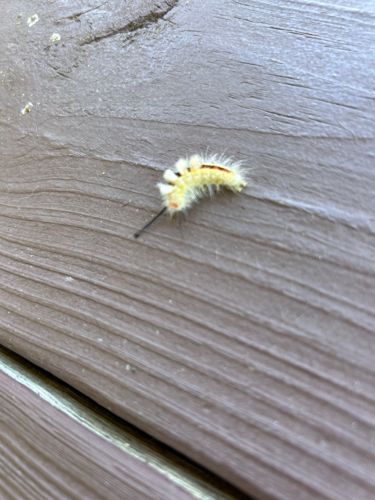White-marked Tussock Moth Caterpillar (likely)
Scientific Name: Orgyia leucostigma (likely)
Order & Family: Lepidoptera, Erebidae (formerly Lymantriidae)
Size: Larvae typically grow to about 2.5 - 3.5 cm (1 - 1.4 inches) in length.

Natural Habitat
Forests, woodlands, orchards, urban and suburban areas where host trees are present.
Diet & Feeding
Polyphagous, meaning they feed on a wide variety of deciduous and coniferous trees, including oak, maple, birch, apple, and various evergreens. They consume leaves.
Behavior Patterns
The caterpillar stage is the feeding and growth stage. They are typically solitary feeders, though can sometimes be found in groups on host plants. They will eventually pupate into a moth. This specific species is known for its tussock-like hairs. When disturbed, they may curl up or drop from the host plant.
Risks & Benefits
Risks: The hairs of tussock moth caterpillars, including the White-marked Tussock Moth, can cause skin irritation, rashes, or allergic reactions (dermatitis) in some individuals upon contact. They are also considered a tree pest, as large populations can cause defoliation of host trees, which can stress or weaken the trees, especially if defoliation occurs over multiple years. Benefits: They are part of the food chain, providing food for birds and other predators. As adult moths, they can act as pollinators to a very minor extent.
Identified on: 8/29/2025